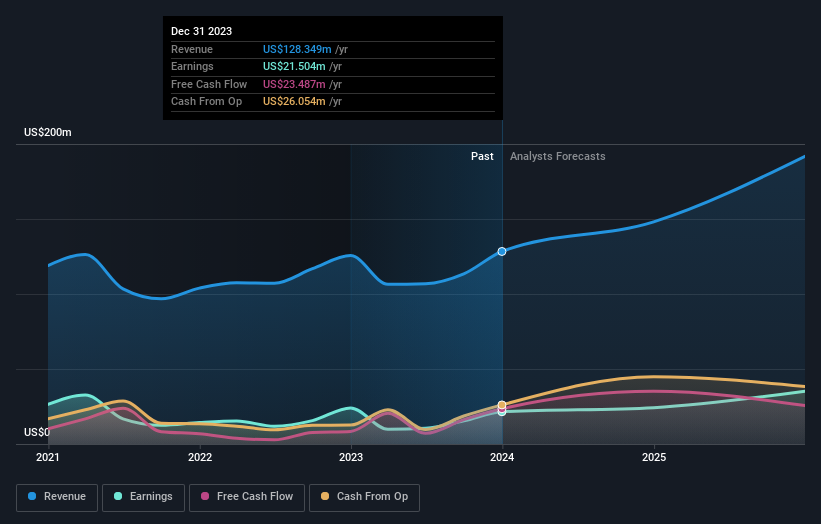Energy Recovery, Inc. Earnings Missed Analyst Estimates: Here's What Analysts Are Forecasting Now
It's shaping up to be a tough period for Energy Recovery, Inc. (NASDAQ:ERII), which a week ago released some disappointing yearly results that could have a notable impact on how the market views the stock. Results look to have been somewhat negative - revenue fell 4.8% short of analyst estimates at US$128m, and statutory earnings of US$0.37 per share missed forecasts by 9.8%. The analysts typically update their forecasts at each earnings report, and we can judge from their estimates whether their view of the company has changed or if there are any new concerns to be aware of. Readers will be glad to know we've aggregated the latest statutory forecasts to see whether the analysts have changed their mind on Energy Recovery after the latest results.
View our latest analysis for Energy Recovery
Taking into account the latest results, the most recent consensus for Energy Recovery from four analysts is for revenues of US$148.1m in 2024. If met, it would imply a solid 15% increase on its revenue over the past 12 months. Statutory earnings per share are predicted to ascend 11% to US$0.42. Before this earnings report, the analysts had been forecasting revenues of US$147.4m and earnings per share (EPS) of US$0.34 in 2024. Although the revenue estimates have not really changed, we can see there's been a very substantial lift in earnings per share expectations, suggesting that the analysts have become more bullish after the latest result.
There's been no major changes to the consensus price target of US$22.00, suggesting that the improved earnings per share outlook is not enough to have a long-term positive impact on the stock's valuation. There's another way to think about price targets though, and that's to look at the range of price targets put forward by analysts, because a wide range of estimates could suggest a diverse view on possible outcomes for the business. The most optimistic Energy Recovery analyst has a price target of US$26.00 per share, while the most pessimistic values it at US$19.00. As you can see, analysts are not all in agreement on the stock's future, but the range of estimates is still reasonably narrow, which could suggest that the outcome is not totally unpredictable.
Taking a look at the bigger picture now, one of the ways we can understand these forecasts is to see how they compare to both past performance and industry growth estimates. It's clear from the latest estimates that Energy Recovery's rate of growth is expected to accelerate meaningfully, with the forecast 15% annualised revenue growth to the end of 2024 noticeably faster than its historical growth of 7.3% p.a. over the past five years. Compare this with other companies in the same industry, which are forecast to grow their revenue 3.2% annually. Factoring in the forecast acceleration in revenue, it's pretty clear that Energy Recovery is expected to grow much faster than its industry.
The Bottom Line
The biggest takeaway for us is the consensus earnings per share upgrade, which suggests a clear improvement in sentiment around Energy Recovery's earnings potential next year. Happily, there were no major changes to revenue forecasts, with the business still expected to grow faster than the wider industry. The consensus price target held steady at US$22.00, with the latest estimates not enough to have an impact on their price targets.
With that in mind, we wouldn't be too quick to come to a conclusion on Energy Recovery. Long-term earnings power is much more important than next year's profits. We have forecasts for Energy Recovery going out to 2025, and you can see them free on our platform here.
Plus, you should also learn about the 1 warning sign we've spotted with Energy Recovery .
Have feedback on this article? Concerned about the content? Get in touch with us directly. Alternatively, email editorial-team (at) simplywallst.com.
This article by Simply Wall St is general in nature. We provide commentary based on historical data and analyst forecasts only using an unbiased methodology and our articles are not intended to be financial advice. It does not constitute a recommendation to buy or sell any stock, and does not take account of your objectives, or your financial situation. We aim to bring you long-term focused analysis driven by fundamental data. Note that our analysis may not factor in the latest price-sensitive company announcements or qualitative material. Simply Wall St has no position in any stocks mentioned.

